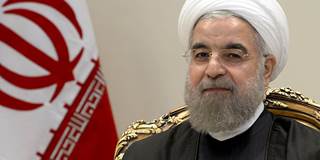Inviting Iran to the next round of talks on the Syria crisis in Vienna, Austria, has far-reaching implications. In fact, Iran’s current government is attempting to overthrow a balance of power that has endured for some 1,400 years – and Saudi Arabia, as the cradle of the Muslim world, will not allow it.
RIYADH – Inviting Iran to the next round of talks on the Syria crisis in Vienna, Austria – an invitation that was reiterated last week – has far-reaching implications. In fact, Iran’s current government is attempting to overthrow a balance of power that has endured for some 1,400 years – and Saudi Arabia, as the cradle of the Muslim world, will not allow it.
The divide between Iran and Saudi Arabia, the Middle East’s most prominent Shia and Sunni powers, respectively, has deep roots. If we are to understand what is really happening in the Middle East today – not just in Syria – one must consider the origins of the Sunni-Shia schism, the Arab-Persian divide, and past struggles over the governance of Islam.
Islam was divided between Sunni and Shia after the prophet Muhammad died and a new successor had to be chosen. Most of his followers, who became known as Sunni Muslims, felt that the faithful should base their decision on ability, and supported the Muslim elders’ choice of Muhammad’s father-in-law, Abu Bakr. But a small dissident group, who would eventually become known as Shia Muslims, were adamant that the new caliph should be a blood relative of the prophet, and thus decided that Muhammad’s son-in-law and cousin Ali ibn Abi Talib (the fourth caliph, according to Sunnis) was his rightful successor. Today, 90% of all Muslims are Sunni, and 10% are Shia.

RIYADH – Inviting Iran to the next round of talks on the Syria crisis in Vienna, Austria – an invitation that was reiterated last week – has far-reaching implications. In fact, Iran’s current government is attempting to overthrow a balance of power that has endured for some 1,400 years – and Saudi Arabia, as the cradle of the Muslim world, will not allow it.
The divide between Iran and Saudi Arabia, the Middle East’s most prominent Shia and Sunni powers, respectively, has deep roots. If we are to understand what is really happening in the Middle East today – not just in Syria – one must consider the origins of the Sunni-Shia schism, the Arab-Persian divide, and past struggles over the governance of Islam.
Islam was divided between Sunni and Shia after the prophet Muhammad died and a new successor had to be chosen. Most of his followers, who became known as Sunni Muslims, felt that the faithful should base their decision on ability, and supported the Muslim elders’ choice of Muhammad’s father-in-law, Abu Bakr. But a small dissident group, who would eventually become known as Shia Muslims, were adamant that the new caliph should be a blood relative of the prophet, and thus decided that Muhammad’s son-in-law and cousin Ali ibn Abi Talib (the fourth caliph, according to Sunnis) was his rightful successor. Today, 90% of all Muslims are Sunni, and 10% are Shia.